|
LabGuy's World: Modern batteries for vintage portapac VTRs
PROJECT GOALS: To identify and adapt the latest battery technology to the powering of early video tape recorders and other vintage electronics originally powered by technology that is essentially unavailable or even obsolete today. We will first investigate battereis that can reside within the orginal device and later examine solutions based on external battery packs. Please kick back and enjoy part one. 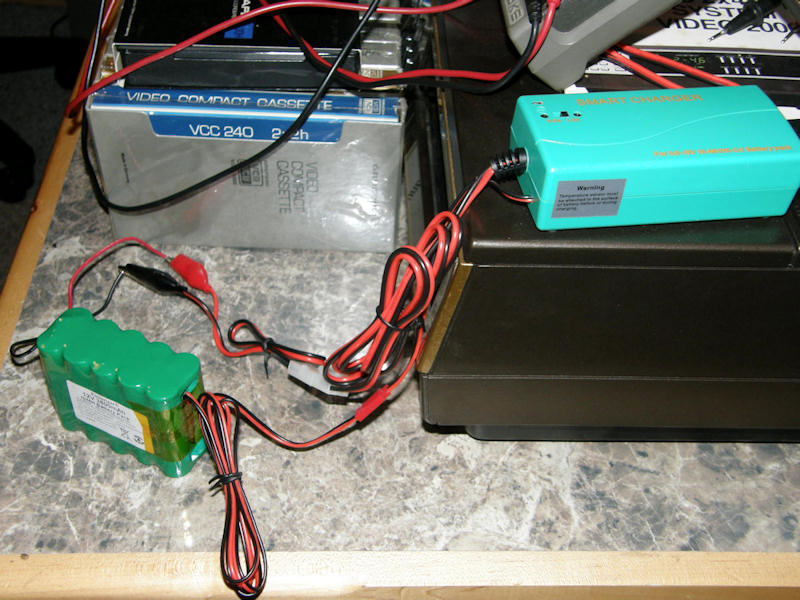
Modern 12 volt NiMH battery pack with matching smart charger Shown here is the latest in battery tech as compared to the era of the old battery powered portable VTRs. The battery pack is rated 12 volts at 3800mA (3.8A). Specifically designed for high load currents in battery powered race cars and such. The battery pack and charger are sold as separate items. The total cost with postage was just under $75. When it arrived the battery voltage was around 7.5 volts. It was then placed on the smart charger and was fully charged in about an hour! Another super bonus with this charger is that it will operate from 100 volts to 250 volts AC. So, this will work for you folks in other parts of the world. The manufacturer is called Powerizer and below are the links to their site.
Powerizer Home Page 
The heat sensor must be in contact with the battery during charging The temperature sensor must be in contact with the battery pack while it is charging. The temperature sensor is plugged into the charger. When the batteries reach full charge, they begin to warm up. This is how the charger is prevented from over charging the batteries. The sensor is not required while using the battery in normal discharge mode. 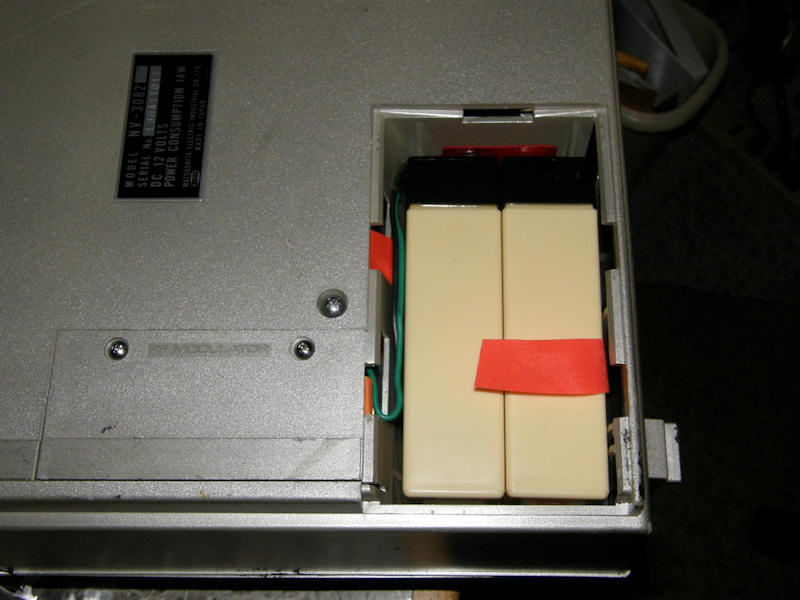
Panasonic NV-3082 original batteries in their normal position The Panasonic NV-3082 used two 6 volt, 3Ahr lead acid batteries that weigh a total of two and half pounds, or one point two kilograms. The new batteris are less than half that weight, they are more compact and have a higher current rating as a bonus! That's longer run time and that's always good. 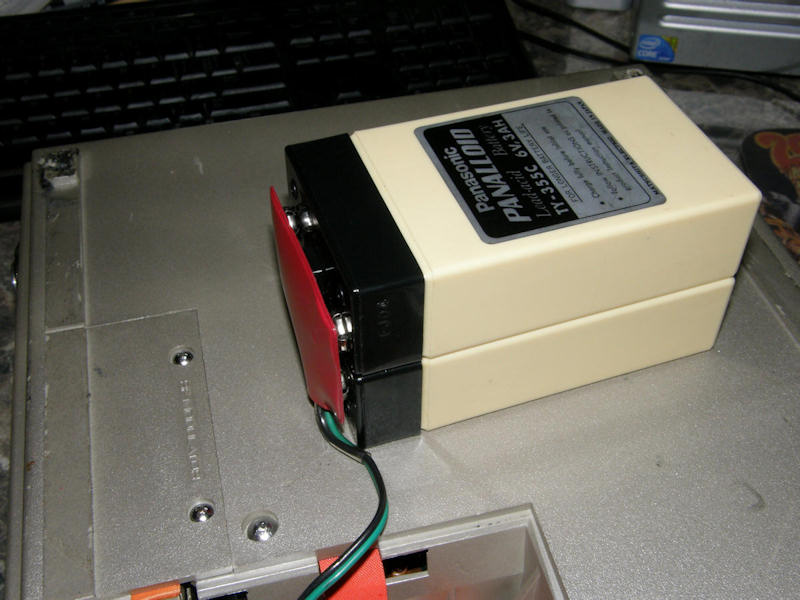
Two six volt batteries paired to make twelve volts. The batteries are attached just like two nine volt transistor radio batteries. Only bigger. When you open your VTR, it is virtually guaranteed to have a different connector arrangement than we see here. Be creative. But, be safe. The new batteries have a hazardous amount of energy stored in them. They are specifically designed to give it ALL back RIGHT NOW. Be aware of burn and fire hazards when working with any high power battery. 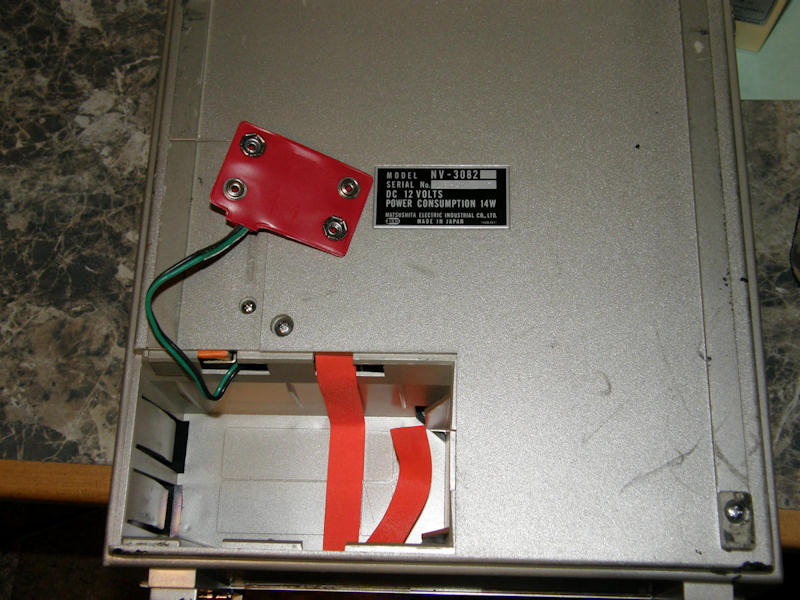
Looks like plenty of room from here Just a quick look in the battery compartment to get a sense of the available space. 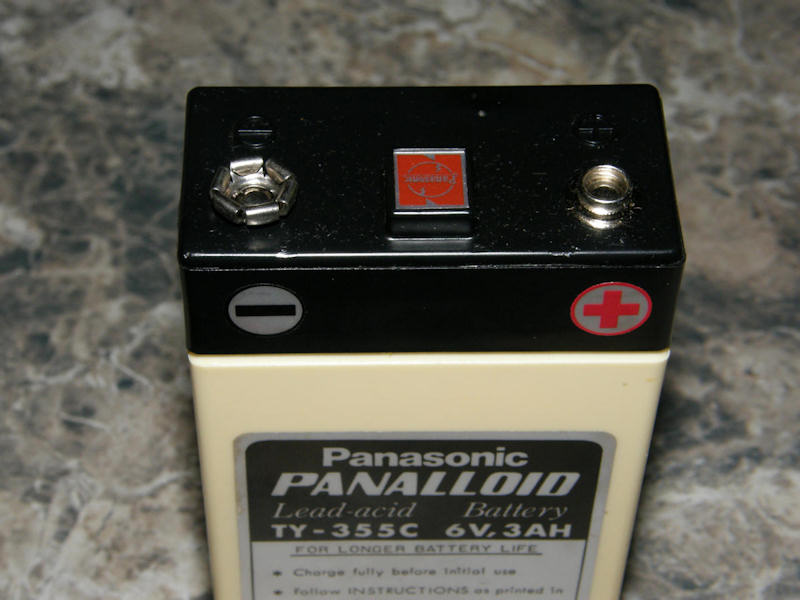
Transistor radio battery on steroids This battery was probably manufactured in the early 1970s. It measured a measly point two volts. Even after having been charged for hours. Regardless, we need to get those snap connectors for our own. How do you do that without getting drenched in acid? I believe a certain amount of luck may be involved. (Be sure to wear acid resistant gloves and eye protection. An acid apron would be a wise choice if you have it. Work only near a plentyful source of fresh water for emergency rinsing. Shower, garden hose or proper eye wash station.) 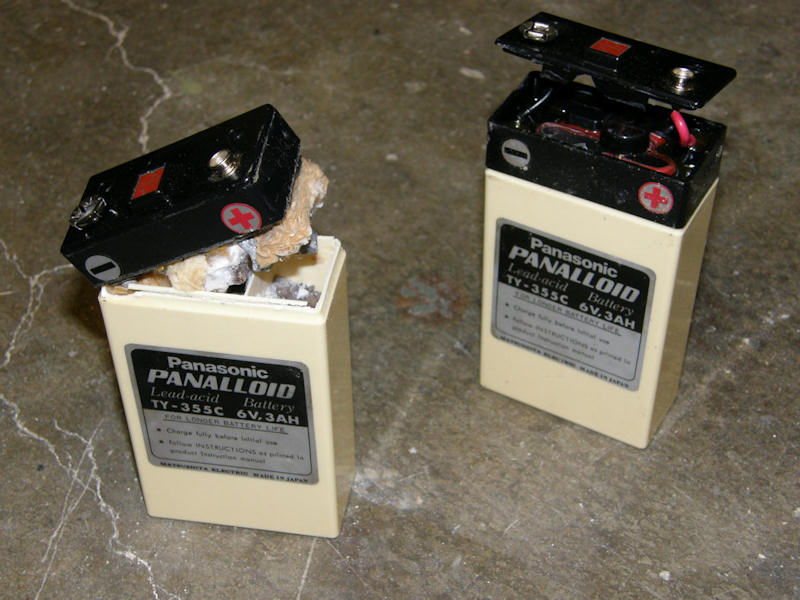
Good engineering is in the mistakes During my first attempt to extract the crown from the battery, I seriously miscalculated the first cut. After more than forty years, this battery was dry as an old bone. The original three ingredients were lead, silica (sand) and sulfuric acid. Simple. A few tufts of spun glass cloth to prevent internal splashing round out the design. Though dried out, it is still mildly hazardous and toxic, due to the presence of pure lead and lead sulfide. In the end, no harm was done. It was my lucky day! Changed my tool of choice from a hack saw to a sharp wood chisel and rubber mallet, moving on to my second battery, I discovered a seam just beneath the rim of the top plate. See the battery on the right, above. The top plate with the snaps simply pried out. It was either lightly glued or poorly welded (ultrasound) I performed this slightly messy task on the concrete floor of our garage. NOT in the house proper. 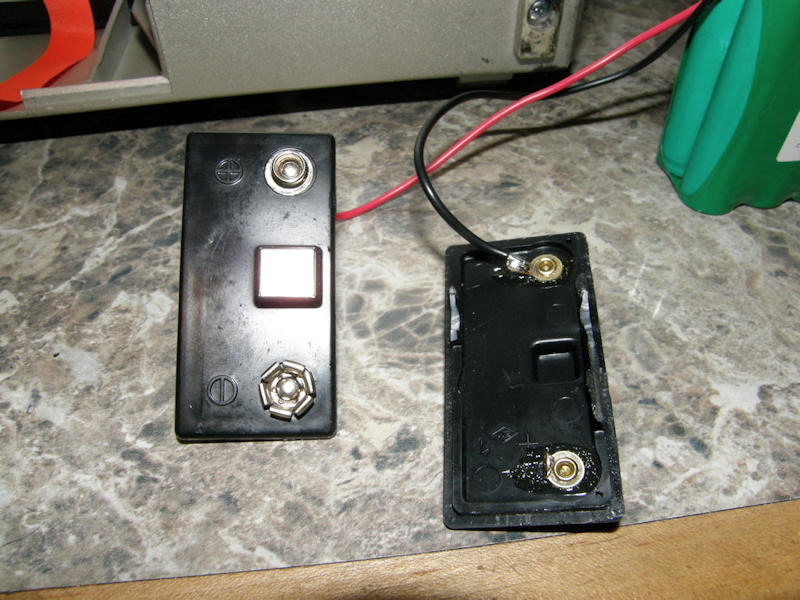
Now we can connect our new battery to the VTR as conviently as before Due to the way the battery connectors are keyed, I had to use both battery tops to make one connection to the VTR. The plan was to use one battery top in the VTR and the other would be on the charger so I could just plug them together. Thinking about it, I realized this was to prevent connecting the two lead acid batteries directly together! So, plan B for the charge connector is good old reliable alligator clips. PLEASE NOTE: The new NiMH battery MUST be removed from the VTR if the VTR is to be operated on the AC power supply. The charger in the power supply is not compatible with the new NiMH battery technology and very bad things might happen! Just install the battery before you operate mobile. Remove it again as soon as you are home. 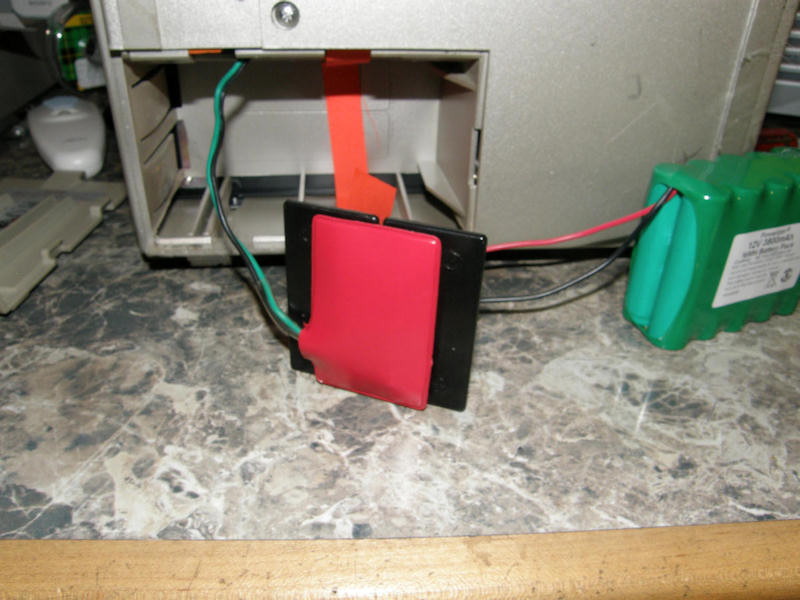

Front and back of the new battery connector Here is the final result of the mechanical phase of construction. I have since added electrical tape over the back side of the contacts. 
Snug as a bug in a rug More power and room to spare! The new battery fits easily within the old compartment. The connectors tucked in next to the battery. Sweet! 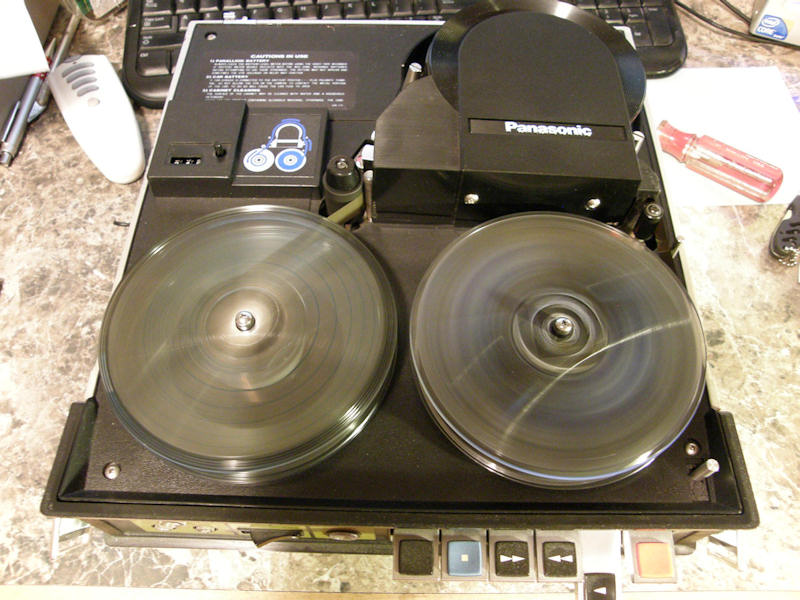
It's alive, Jim! It's life, Captain. Exactly as we know it.* I snapped this photo in room light so as to convey the reel motion to my visitors. This VTR has been orperational since the day it was made. The previous owner(s) took immaculate care of the machine, getting it serviced regularly and treating with the proper respect. I obtained it a few years ago and have used it for several tape recovery jobs, always operating on AC current. Today, it takes a step up in functionality and will actually be used in its original intended service. 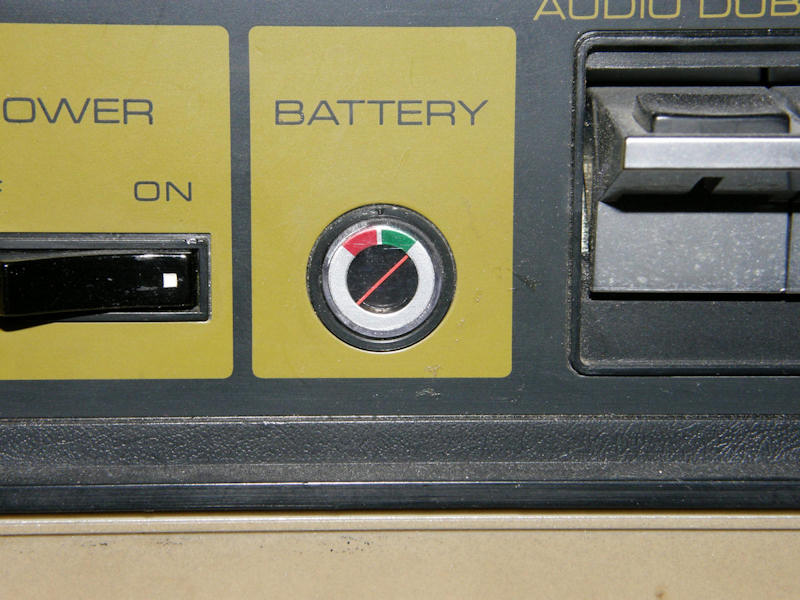
Captain! I can give you all the power you want!* The meter is pegged! Success at last! (?) In part 2, we will take this 1970 classic portapac out for ham radio field day this weekend. (June 22 and 23, 2013) * Things you never hear on Star Trek. [HOME] [BATTERIES PART 2] [PANASONIC NV-3082] [VIDEO TAPE RECORDERS] Created: January 09, 2005, Last updated: July 1, 2013 |